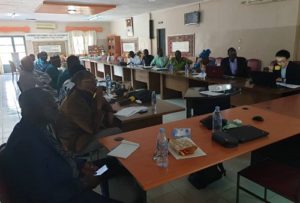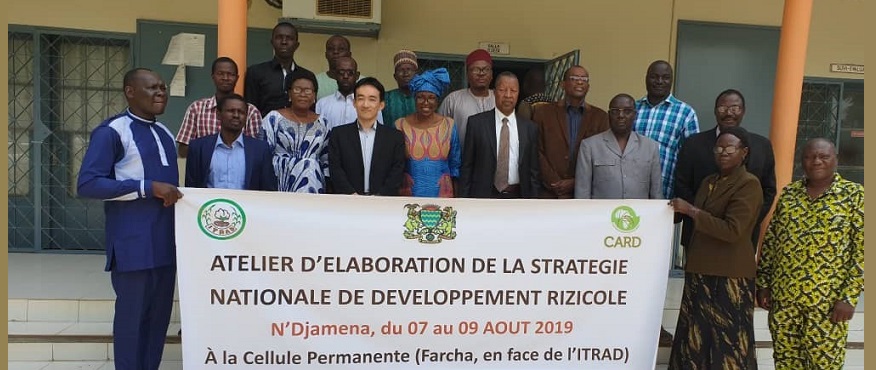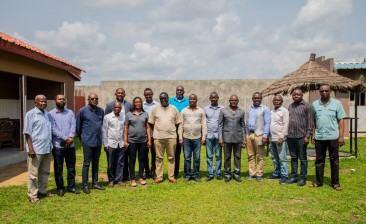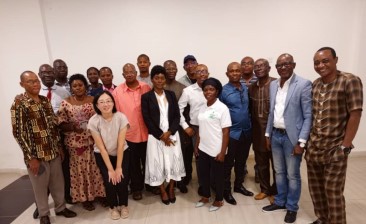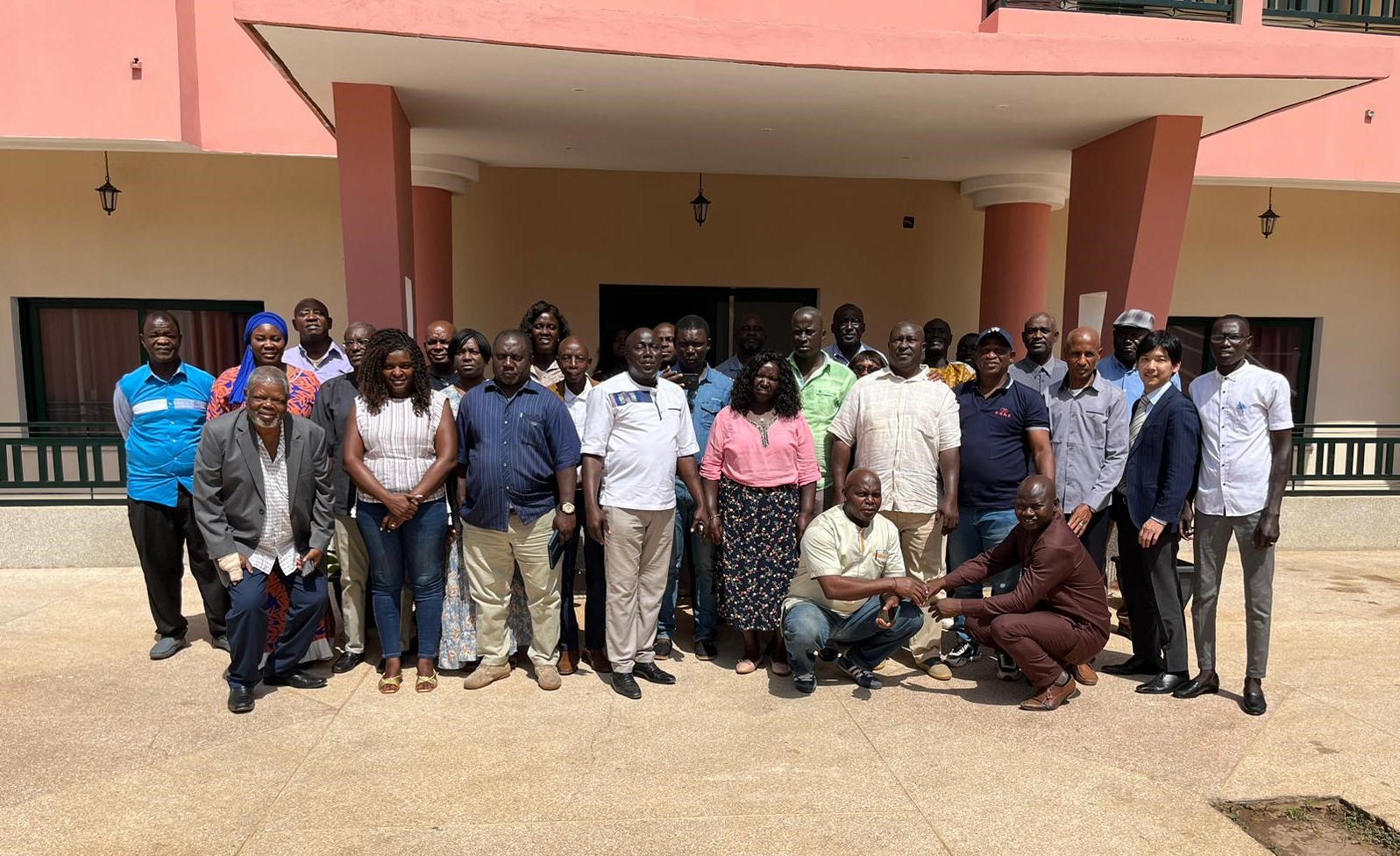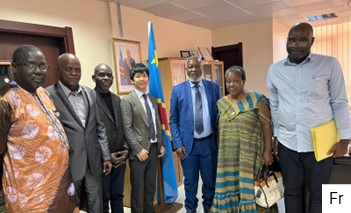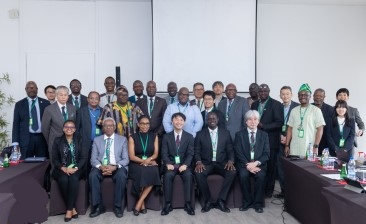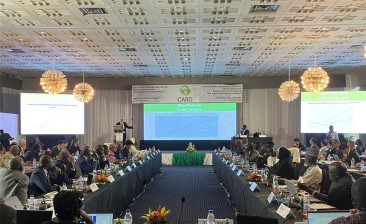Chad, August 2019
First Working Week for NRDS Revision Chad
In Chad, rice is the fourth most important cereal after wheat, maize, and millet. Its production has grown at an average annual rate of 5% over the last ten years. However, despite this growth, changing dietary habits and urbanization are rapidly increasing the domestic rice demand and hence the importation of rice from elsewhere.
The level of domestic production in 2018 was 260,000 tons against a need of 460,000 tons. With a coverage rate of nearly 57% of domestic consumption requirements, the markets fill the gaps through importation. According to the latest statistics, the level of consumption per capita is of the order of 31.4kg and the consumer preference is primarily focused on local rice because of its taste. This preference is important as it values the efforts of the producer, generates jobs, and improves the standard of living of the populations in rural areas.
Thus, to enable rice to play its role in creating wealth in rural areas, Chad must revitalize the rice sector throughout its value chain by increasing the productivity and the production of quality and competitive price. To do this, the higher authorities have decided to accelerate the pace of the sector so as to double the production level of 2018 in 2025 and achieve self-sufficiency in rice and accumulate a stock of security by 2030.
It is in this context that the first working week was organized between the 7th and 9th of August 2019 in order to launch the process of developing a national rice development strategy (NRDS).
Chaired by the Representative of the Director-General of Agriculture, this workshop saw the participation of the main actors from the rice value chain in Chad. The objectives of the workshop were to launch CARD’s support activities in Chad and initiate the process of preparing NRDS.
Key outputs / Results
In terms of results, it should be noted that the participants made a diagnosis of the rice sector and reflected on the different development scenarios to be put in place to enable the country to achieve its goal of self-sufficiency in rice. These actions are prerequisites for the preparation of the NRDS, which should constitute the reference framework for all interventions in favor of the development of the rice sector. The diagnosis involved a participatory approach involving all key players.
The results have shown that it is necessary to establish a national unit that will be in charge of the rice sector so as to coordinate the various interventions in the rice sector that will enable reaching the production levels of nearly 681,000 tons of paddy in 2025 and 1,400,000 tons in 2030 under the NRDS. To achieve this target, it will be necessary to rehabilitate 10,000 ha of irrigation schemes and develop 20,000 ha of new irrigation schemes. In addition, it will be necessary to modernize and intensify the production systems by using inputs respecting the agronomic standards.
The projections show that if the new strategy is not implemented, the rice deficit would increase to 260,000 tons by 2030 (the equivalent of approximately FCFA 100 billion of importation bill). But, if the new strategy is implemented, Chad could reach self-sufficiency in rice by 2030 and have a stock of security of 220,000 tons.
The impacts and costs of the new strategy are under evaluation. However, it should be noted that the strategy could be based on current actions. A review conducted by the participants at the workshop revealed that presently there are about five active projects in the rice sector.
The strategy adopted to ensure full and sustainable involvement of all actors includes the following:
1) Government focusing on its sovereign role,
2) A greater involvement of the private sector in the rice value chain and
3) A demand-driven approach via such processes as a contract-based system to make actors introducing a contract-based system to make those involved more responsible.
Going forward, it is expected that the discussion process will continue in order to finalize the NRDS document by June 2020. To this end, after receiving technical comments from the key stakeholders, a second working week will be organized for the determination of the cost and the elaboration of the action plan under the NRDS.
